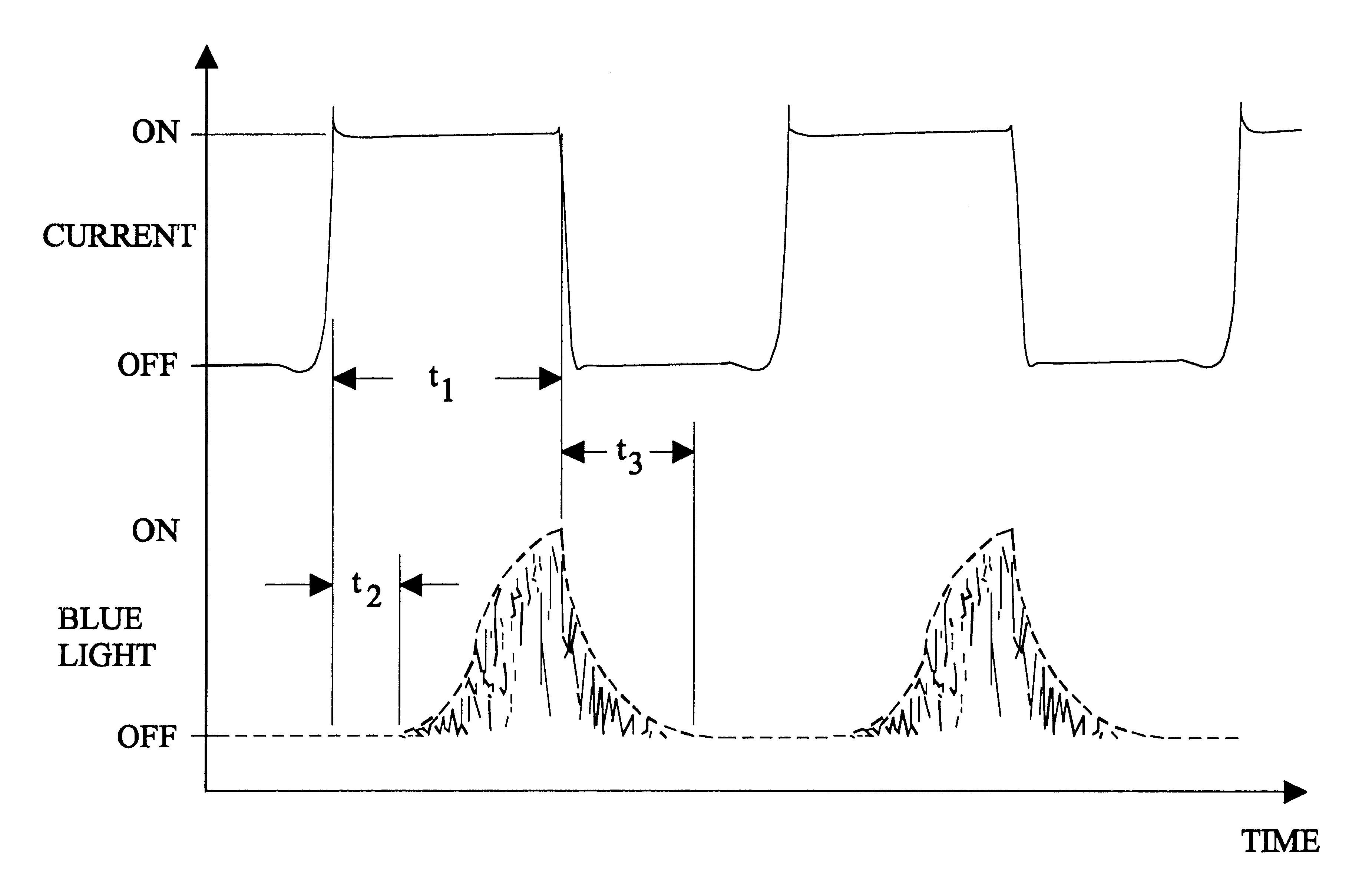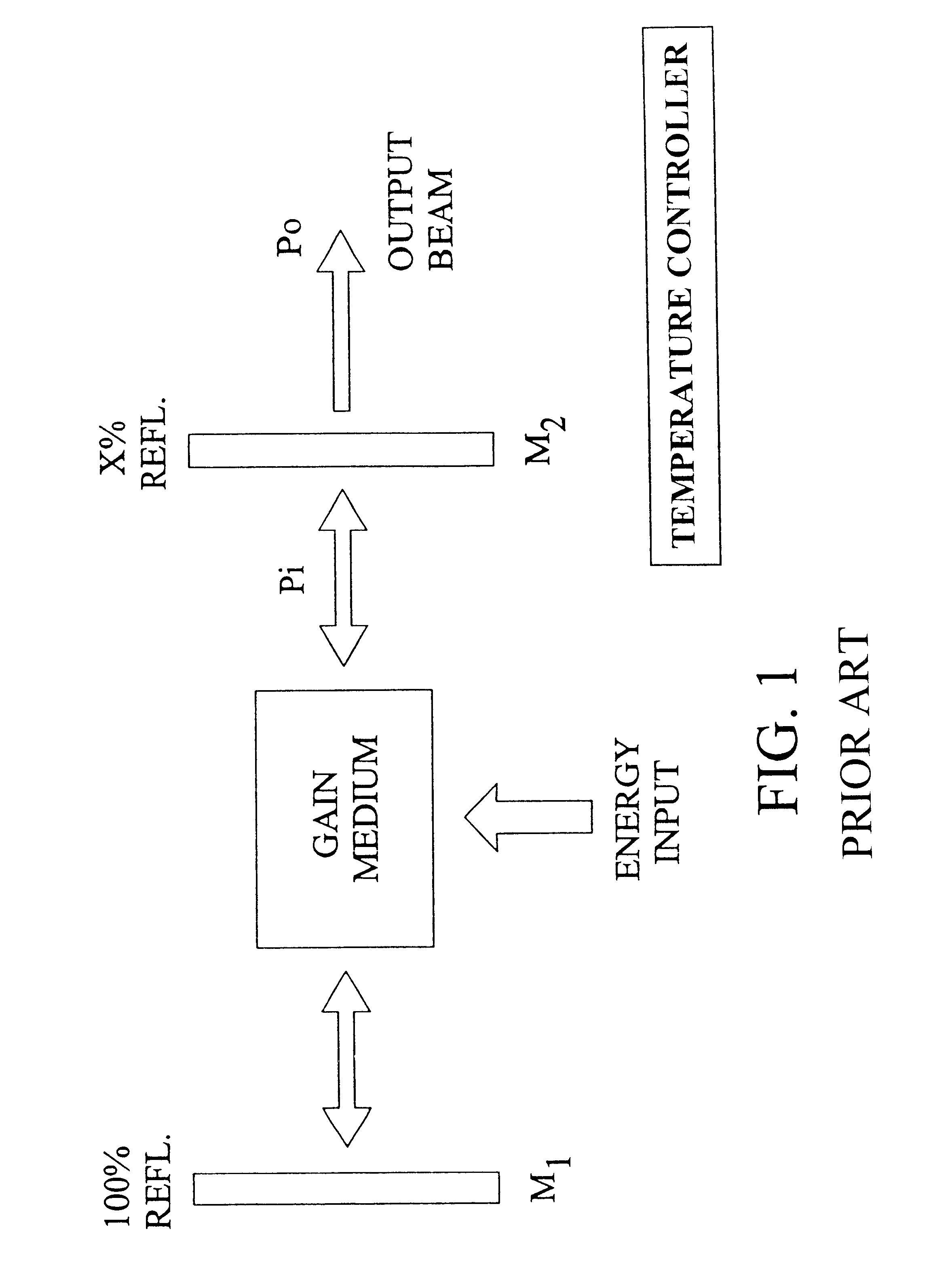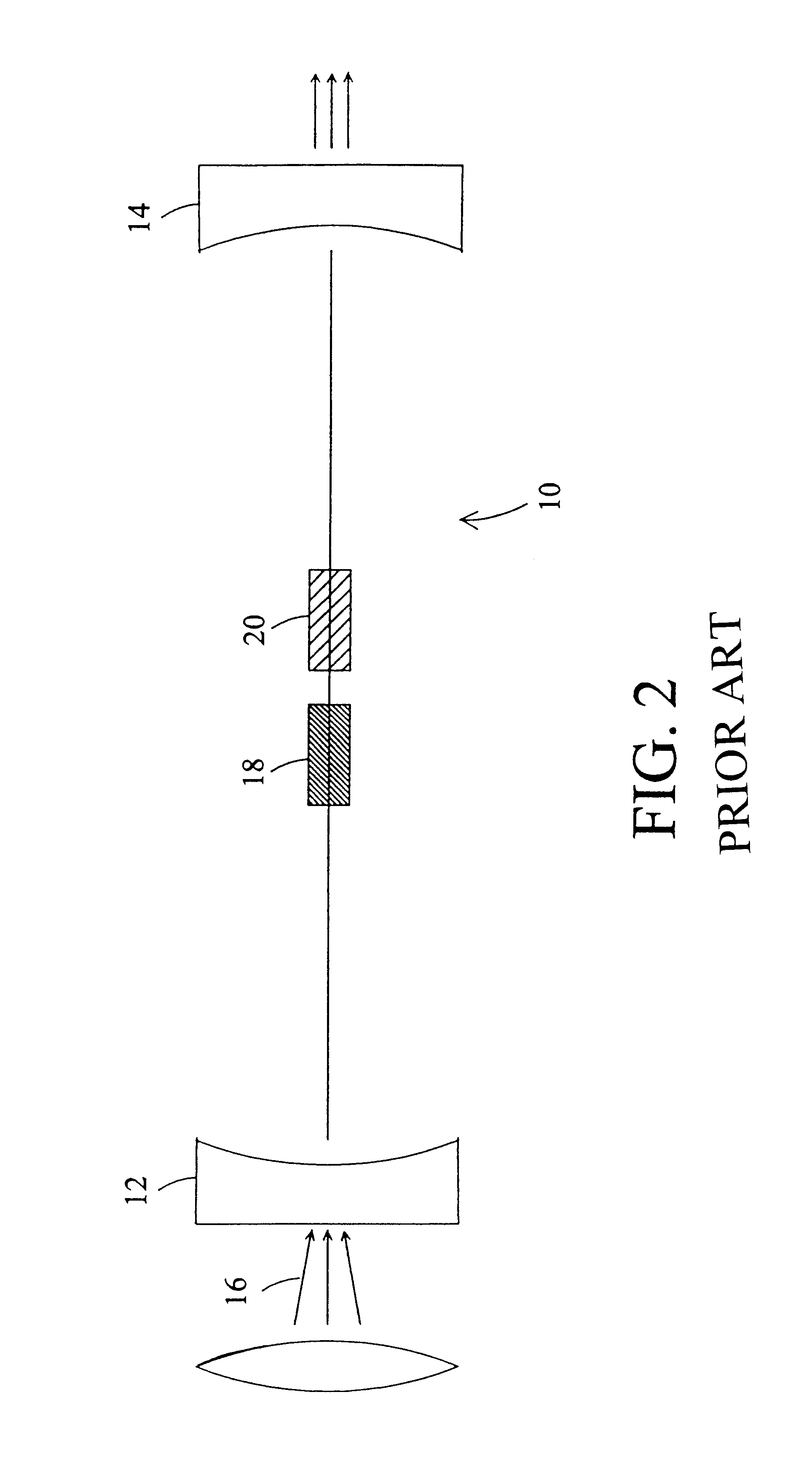Intracavity doubled laser
a double-laser, intracavity technology, applied in the direction of laser details, electrical equipment, wave amplification devices, etc., can solve the problems of not all materials will perform well over the entire optical spectrum, and posses characteristics which are less than ideal, and achieve the effect of reducing noise outpu
- Summary
- Abstract
- Description
- Claims
- Application Information
AI Technical Summary
Benefits of technology
Problems solved by technology
Method used
Image
Examples
Embodiment Construction
The noise in intracavity doubled lasers results, at least in part, from the inherent structure of the device. Placing the SHG crystal and gain medium inside the same laser cavity couples together their two non-linear processes (laser gain, SHG). The resulting system is highly non-linear, unstable, and difficult to adjust for stability. In particular, intracavity doubled lasers typically suffer from excessively large amplitude fluctuations, chaotic in time, on the output beam. In addition, the fluctuations in amplitude may be magnified by the non-linear processes. In particular, fluctuations in the laser's amplitude may be magnified in the harmonic it produces. This situation has often been referred to as the “green problem”.
Baer in a paper entitled Large-Amplitude Fluctuations Due to Longitudinal Mode Coupling In Diode-Pumped Intracavity-Doubled Nd:YAG Lasers, J. Opt. Soc. Am. B, Vol. 3, No. 9, September 1986, Pages 1175-1180, incorporated by reference herein, analyzes the amplitude...
PUM
 Login to View More
Login to View More Abstract
Description
Claims
Application Information
 Login to View More
Login to View More - R&D
- Intellectual Property
- Life Sciences
- Materials
- Tech Scout
- Unparalleled Data Quality
- Higher Quality Content
- 60% Fewer Hallucinations
Browse by: Latest US Patents, China's latest patents, Technical Efficacy Thesaurus, Application Domain, Technology Topic, Popular Technical Reports.
© 2025 PatSnap. All rights reserved.Legal|Privacy policy|Modern Slavery Act Transparency Statement|Sitemap|About US| Contact US: help@patsnap.com



